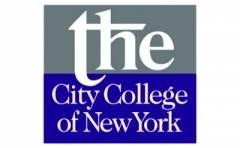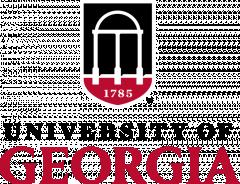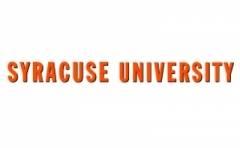Best Science Education colleges in the U.S.
Best Science Education colleges in the U.S. for 2025
Western Governors University offers 30 Science Education degree programs. It's a very large, private not-for-profit, four-year university in a large suburb. In 2022, 2,328 Science Education students graduated with students earning 1,929 Bachelor's degrees, 398 Master's degrees, and 1 Certificate.
CUNY Queens College offers 16 Science Education degree programs. It's a large, public, four-year university in a large city. In 2022, 28 Science Education students graduated with students earning 14 Master's degrees, 8 Certificates, and 6 Bachelor's degrees.
CUNY City College offers 19 Science Education degree programs. It's a large, public, four-year university in a large city. In 2022, 17 Science Education students graduated with students earning 17 Master's degrees.
Western Michigan University offers 14 Science Education degree programs. It's a large, public, four-year university in a small city. In 2022, 30 Science Education students graduated with students earning 13 Bachelor's degrees, 12 Master's degrees, 4 Doctoral degrees, and 1 Certificate.
CUNY Hunter College offers 16 Science Education degree programs. It's a very large, public, four-year university in a large city. In 2022, 15 Science Education students graduated with students earning 14 Master's degrees, and 1 Bachelor's degree.
Eastern Michigan University offers 11 Science Education degree programs. It's a large, public, four-year university in a large suburb. In 2022, 14 Science Education students graduated with students earning 11 Bachelor's degrees, and 3 Master's degrees.
University of Georgia offers 6 Science Education degree programs. It's a very large, public, four-year university in a midsize city. In 2022, 60 Science Education students graduated with students earning 31 Master's degrees, 15 Certificates, 9 Bachelor's degrees, and 5 Doctoral degrees.
CUNY Brooklyn College offers 15 Science Education degree programs. It's a large, public, four-year university in a large city. In 2022, 12 Science Education students graduated with students earning 9 Master's degrees, and 3 Bachelor's degrees.

Syracuse University offers 9 Science Education degree programs. It's a very large, private not-for-profit, four-year university in a midsize city. In 2022, 5 Science Education students graduated with students earning 3 Master's degrees, and 2 Bachelor's degrees.
Bridgewater State University offers 9 Science Education degree programs. It's a medium sized, public, four-year university in a large suburb. In 2022, 11 Science Education students graduated with students earning 5 Certificates, 3 Bachelor's degrees, and 3 Master's degrees.
Top schools offering Science Education degrees in the U.S.
Science Education
- Science Teacher Education/General Science Teacher Education Schools
- Learning Sciences Schools
- Biology Teacher Education Schools
- Social Science Teacher Education Schools
- Chemistry Teacher Education Schools
- Earth Science Teacher Education Schools
- Physics Teacher Education Schools
- Environmental Education Schools
- Psychology Teacher Education Schools
Science Education Degree Overview
Courses in Science Education Graduate Programs
The specific course requirements for each master of science education degree program vary from school to school, but the following are some examples of what you might be expected to complete.
- Curriculum development
- Action research
- Chemistry for science educators
- Energetics
- Evolutionary biology
- Physics education for mechanics
- Design and data analysis for researchers
Master's Degree in Science Education
A master’s degree in science education provides an excellent way for current or aspiring high school teachers to find positions and increase their salaries. Today’s high school teachers are required to have a bachelor’s degree, but most schools prefer to hire candidates that have earned an advanced degree in education, particularly those that have a specialization, such as science.
A master’s degree in science education is earned by attending classes and completing teaching requirements that are far more advanced than those earned through an undergraduate degree in education or a master’s degree in general education (MEd). This degree affirms that you an expert in the subject of science education.
Anyone interested in teaching science at high schools and potentially community colleges could greatly benefit from a science education degree.
Master’s in Science Education Employment Outlook
According to the BLS, the employment projection for 2020-2030 shows a growth rate of 8% for this career path, which is equal to the average growth for all occupations within the United States. Projected increases in student enrollment could increase demand for high school teachers, but employment growth varies from state to state and is not guaranteed.
Many schools have reported difficulty filling teaching positions for certain subjects, including the sciences. Because of this, teachers who have specialized training in these subjects could have the best job prospects and a higher chance for sign-on bonuses.
Master’s Degree in Science Education Career Paths
New graduates of science education programs may choose to teach high school students while those with years of previous teaching experience may look to advance their careers by moving into a community college professor or school administrator role. Teaching at a four-year college or university typically requires a PhD.
| Career | Salary | Projected Job Growth (2020-2030) | About the Position |
| High School Teacher | $62,870 | 8% | High school teachers prepare and deliver 9th to 12th-grade academic lessons and teach numerous skills that students will need to attend college or to enter the job market after graduation. |
| Biological Sciences Professor | $85,600 | 13% | Biological science professors provide students both classroom and laboratory biological instruction beyond the high school level. They may also conduct independent research and publish scholarly articles or books. |
| Chemistry Professors | $80,400 | 8% | Chemistry professors provide students with both classroom and laboratory chemistry instruction beyond the high school level. They may also conduct independent research and publish scholarly articles or books. |
How Long Does a Master’s in Science Education Degree Take To Finish?
The course of study to obtain a master’s in science education varies by program requirements and length of time for completion. These different factors can include:
- Previous education– The majority of graduate education degree programs require a minimum of a bachelor’s degree from an accredited school. Some schools allow for transfer credits from other graduate education programs, but it is up to the incoming school.
- Online learning– All or some of the required courses toward a master’s degree in science education can be taken online. This option depends on the school’s requirements for degree completion.
- Part-time vs full-time learning– Most graduate students need to complete a minimum of 45-60 class hours. This tends to take 1-2 years full-time, including student teaching and working as a new teacher.
- Accelerated program availability– Some colleges and universities offer accelerated programs so students can complete courses sooner. However, these programs can be very time-consuming, and the intensity of these condensed programs requires a full-time commitment.
What Can I Do with a Degree in Science Education?
A degree in science education leads to a wide variety of jobs available for new graduates and seasoned educators, and careers are not limited to just teaching. Graduates can enjoy new employment teaching children in K-12, teaching young adults in community college settings, or working in administrative roles for educational institutions. A science education graduate degree also offers career opportunities beyond the classroom in the following:
- Research
- Curriculum development
- Professional writing and editing
- Various roles within local, state, and federal government agencies
Earning an Online Science Education Degree
Most online master’s degree programs are designed for individuals pursuing an advanced degree while working. Therefore, they are designed to accommodate students who prefer or require flexible schedules. Online programs also match the quality of on-campus programs, and degrees earned online are no different from those earned on-campus. There are numerous online options for master’s degrees today. Online education programs offer students the flexibility and convenience to study where and when it is convenient for them. This format of asynchronous coursework makes studying online more appealing for working professionals or students making a career change.
However, on-campus programs offer face-to-face classes with greater opportunities for socializing and networking. This option may be more suitable for recent graduates who are interested in pursuing an advanced degree directly after completing their undergraduate studies.
Should I Complete Courses Online?
Online educational programs have become more common and offer an alternative option to campus-based programs. While online learning may have come with a stigma in the past, most large US-based colleges and universities now offer quality, accredited online courses and degree programs for both undergraduate and graduate specialties. Many of the online classes are taught by the same professors that teach on campus.
How Long do Online Courses Take to Complete?
Each online science education master’s program requires on average 40 – 65 credit hours, and many follow the traditional semester/quarter format. However, some parts of the curriculum can be different based on how courses are delivered.
- Synchronous vs asynchronous courses– Synchronous courses are presented live as online courses that are conducted in real-time with all students required to log in to the classroom at a designated time. Asynchronous courses are designed to allow students to complete them when they can and at their own pace.
- Hybrid vs online courses/programs- Online courses are conducted from remote locations, while hybrid courses are a combination of in-person classroom-based, and online.
- Accelerated online courses– These courses require just as many hours to complete as normal courses but in a shorter amount of time.
- How long can students take to complete an online course?– Most schools have a maximum time in which the course must be completed. This is usually equivalent to a typical semester.
Online Master’s in Science Education Degree Admission Requirements
All online graduate programs require basic forms completed, documents submitted, and fees paid. Potential requirements for admission include:
- Application form (usually completed online)
- Application fee (can vary)
- Minimum BS in education
- GRE (some schools have been waiving this requirement)
- Official college or university transcripts
- Resume/CV
- Letters of recommendation (usually at least three)
- Test of English as a Foreign Language (TOEFL)- for foreign students
Science Education Career and Salary Overview
Salaries for Science Education Graduates
According to the Bureau of Labor Statistics (BLS), an average high school teacher in the United States earns $62,870 per year. However, with a master’s degree in science education, the annual income potential can be as much as $15,000 higher. Most school districts and private schools heavily recruit and pay higher salaries to individuals that have advanced degrees and with a specialization in STEM education.
Each year the U.S. Department of Education (ED) identifies teacher shortage areas. This report lists teacher needs by state and subject, and the report shows a consistent need for high school science teachers. According to ED predictions for this school year and next, there will be a significant need for biology, chemistry, and physics teachers in nearly 30% of the states across the country (USDE, 2021).
Science Education Career Resources
The following are several organizations that serve master’s in science education graduates.
- National Science Teachers Association (NSTA)– is a community of over 40,000 science educators and professionals dedicated to best practices teaching and science’s impact on student learning. NSTA offers excellent resources and continuing learning opportunities so science educators can expand professionally and advance their careers. In addition, they provide opportunities to network peers on a national level, locate mentors, and learn new information from those considered the best in the field.
- National Association for Biology Teachers (NABT)– is a recognized leader in life science education and represents and supports teachers to improve and enhance biological knowledge for all. They are committed to the professional development and advancement of biology and life science educators.
- American Association of Chemistry Teachers (AACT)– is an organization that is passionate about providing its members the tools they need to succeed in the classroom and develop professionally. Members include K-12 teachers, college professors, preservice teachers, industrial professionals, and even individuals employed by museums.
- American Association of Physics Teachers (AAPT)– was established in 1930 and is a robust professional physics science society devoted to the pursuit of excellence in physical science education.
- American Association for the Advancement of Science (AAAS)- This organization was formed in 1848 and seeks to “advance science, engineering, and innovation throughout the world for the benefit of all people.” AAAS publishes the monthly journal Science and membership is open to “anyone who shares our goals and belief that science, technology, engineering, and mathematics can help solve many of the challenges the world faces today.”
Science Education FAQ
List of all Science Education colleges in the U.S.
| School | Average Tuition | Student Teacher Ratio | Enrolled Students | |
|---|---|---|---|---|

|
Western Governors University Salt Lake City, UT | 53 : 1 | 156,935 | |

|
CUNY Queens College Queens, NY | 30 : 1 | 17,001 | |

|
CUNY City College New York, NY | 30 : 1 | 14,489 | |

|
Western Michigan University Kalamazoo, MI | 23 : 1 | 17,000 | |

|
CUNY Hunter College New York, NY | 37 : 1 | 22,970 | |
Article Sources
- American Association for the Advancement of Science. (2021)
- American Association of Chemistry Teachers. (2021)
- American Association of Physics Teachers (2021)
- Johns Hopkins University. (2021). Course Catalogue [Online]
- National Association of Biology Teachers. (2021)
- National Science Teachers Association. (2021)
- Stanford University. (2021). Course Catalogue [Online]
- University of Pennsylvania. (2021). Course Catalogue [Online]
- U.S. Bureau of Labor Statistics.
- U.S. Department of Education. (2021). Teacher Shortage Areas










